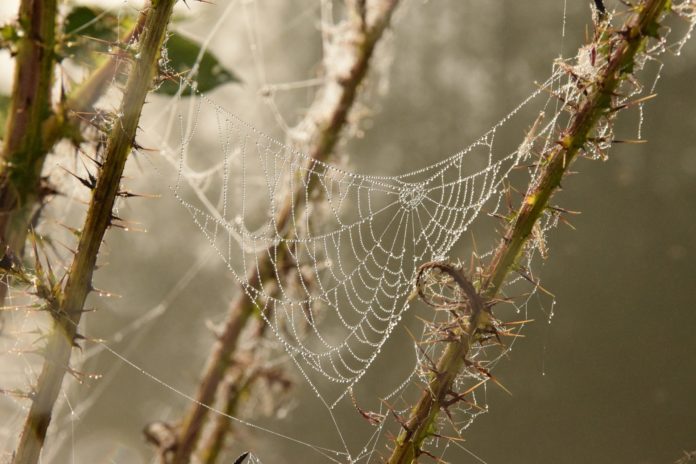To us, brainwashing may sound like something out of a science fiction movie. But for one species of spider in the Ecuadorian Amazon, brainwashing is a very real — and dangerous — fact of life.
The Amazonian Anelosimus eximius is a social species of spider that is known by ecologists for its communal webs: complex structures that are home to up to tens of thousands of spiders. So when Philippe Fernandez-Fournier, a former master’s student in the Department of Zoology at the University of British Columbia, noticed some of these spiders straying from their homes, he knew something was wrong.
“It was very odd because they don’t normally do that, so I started taking notes,” Fernandez-Fournier said in a press release.
In addition to their suddenly antisocial behaviour, Fernandez-Fournier noticed that these spiders had parasitic larvae attached to their abdomens, and had inexplicably started weaving cocoon-like webs unlike the communal webs they normally build.
This bizarre behavioural modification is described by Fernandez-Fournier and colleagues in a paper published in Ecological Entomology.
It was only after taking several cocoon webs back to the lab for further study that Fernandez-Fournier and his colleagues were able to piece together what was going on.
The cocoons, it turned out, weren’t designed for the spiders at all. Instead, Fernandez-Fournier was shocked to find that the cocoons had become home to a new species of wasp that he and his colleagues soon recognized as belonging to the Zatypota genus. This genus describes a group of parasitic wasps that are known for targeting host spiders.
In this case, the social Anelosimus eximius spiders are the unfortunate targets.
By studying archival observations of these spiders, Fernandez-Fournier and his colleagues were able to document each stage of the Zatypota wasp’s life cycle.
After a female wasp lays its eggs on an unwitting spider’s abdomen, the larva spends the beginning of its life feeding off its host and taking control of its body. Eventually, it forces the spider to leave its colony and spin a cocoon web that the larva will live in while it matures into a wasp. Before entering the cocoon, however, the larva feasts on its former host — and the spider does nothing to stop it.
“This behaviour modification is so hardcore,” said Samantha Straus, a PhD student in UBC’s Department of Zoology and a co-author on the paper. “The wasp completely hijacks the spider’s behaviour and brain and makes it do something it would never do. That’s very dangerous for these tiny spiders.”
The authors suspect that their large communal webs are the reason these social spiders are being targeted. With so many spiders together in one location, they serve as a plentiful food source for the parasitic wasps.
The mechanism behind this “brainwashing” is still a mystery, however.
The authors theorize that an injection of hormones causes the spiders to tap into ancestral dispersal behaviours may be the culprit, but further investigation will be necessary to confirm this theory.
Whatever the cause, these wasps’ brainwashing behaviour is proof that when it comes to nature, fact is sometimes much stranger than fiction.










































